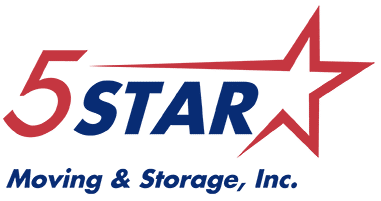Assessing your needs and objectives
Before packing a single box, take time to evaluate your reasons for the move. Are you looking for more space, better amenities, or a location closer to your target market? Understanding your goals will help you make informed decisions throughout the process.
Setting a budget
Financial planning is crucial for a successful office move. Establish a detailed budget that includes everything from hiring office movers to outfitting the new space. Having a clear financial plan will prevent unexpected costs from derailing your relocation.
Selecting the right location
Choosing the right location for your new office is a critical decision. Consider factors like accessibility for clients and employees, proximity to suppliers, and the overall vibe of the neighborhood. Your location can significantly impact your business’s success.
Hiring Professional Office Movers, 5 Star Moving and Storage
The benefits of hiring experts
While DIY moves might work for homes, office relocations require a different level of expertise. Professional office movers have the experience, equipment, and resources to ensure a smooth transition, minimizing downtime and risks.
How to choose the right office moving company
Research and compare different office moving companies. Look for referrals, read reviews, and check their track record with similar projects. A reputable mover will collaborate closely with you and tailor their services to your specific needs.
Creating a Moving Timeline
Setting milestones and deadlines
Time management is key during an office move. Create a detailed timeline that outlines every step of the relocation process, from notifying employees to unpacking in the new space. Stick to your schedule to avoid unnecessary delays.
Assigning responsibilities
Delegate responsibilities to your team members or departments. Ensure everyone knows their role in the move, from IT specialists handling tech equipment to HR managing employee logistics.
Packing and Organizing
Tips for efficient packing
Efficient packing can save you time and money. Use high-quality packing materials, label boxes clearly, and consider color-coding for different departments or areas. Organization is the key to a smooth unpacking process.
Labeling and inventory management
Maintain a detailed inventory of all your office assets. Label boxes with their contents and their intended location in the new space. A well-organized inventory will prevent items from getting lost or misplaced during the move.
Technology and IT Considerations
Transferring your IT infrastructure
Moving your IT infrastructure requires careful planning. Work closely with your IT team or provider to ensure a seamless transition. Back up critical data and test all systems in the new location before fully relocating.
Ensuring data security
Data security is paramount during an office move. Implement strict protocols to protect sensitive information, and consider investing in cybersecurity measures to safeguard your data during and after the move.
Furniture and Equipment Transport
Disassembly and reassembly
Large furniture and equipment often require disassembly and reassembly. Ensure that your office movers are equipped to handle these tasks efficiently, preventing damage or delays.
Specialized equipment handling
If your office contains specialized equipment, communicate this to your movers in advance. They may need special tools or techniques to transport fragile or sensitive items safely.
Employee Communication
Keeping your team informed
Open and transparent communication is essential during an office move. Keep your employees informed about the relocation process, including timelines and changes to their work routine. Address their concerns and provide support.
Addressing concerns and questions
Encourage employees to ask questions and voice their concerns. Addressing these issues promptly will help ease anxiety and ensure a smoother transition for your team.
Minimizing Downtime
Strategies for a smooth transition
Minimizing downtime is crucial for business continuity. Develop a plan to ensure essential operations continue during the move. Consider temporary workspace solutions if necessary.
Temporary workspace solutions
If there’s a gap between vacating your old office and settling into the new one, arrange temporary workspaces or remote work options for your employees. This will help maintain productivity during the transition.
Legal and Compliance Aspects
Updating licenses and permits
Relocating your office may require updates to licenses and permits. Ensure you’re compliant with local regulations and secure the necessary approvals well in advance.
Complying with regulations
Different regions may have varying regulations regarding office spaces. Familiarize yourself with local building codes, zoning laws, and other relevant regulations to avoid legal issues.
Post-Move Evaluation
Assessing the success of the move
After the dust has settled, evaluate the success of your office move. Consider whether your goals were met, and if not, identify areas for improvement in future relocations.
If you need professional office moving services or any other commercial moving services in Colorado Springs, please call us at 5 Star Moving and Storage. We’d welcome an opportunity to discuss your situation and help your business a successful relocation.

